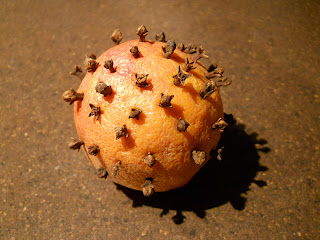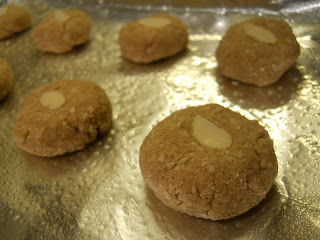In many Catholic traditions, Epiphany (January 6th), symbolizes the last day for Christmas celebrations. Epiphany Eve (January 5th), in the Italian culture, "La Befana" goes out to visit the children of Italy. In this folklore, the Befana is a witch-like lady who fills the socks of good boys and girls with candy and gifts (usually chocolate, nuts and oranges). It's a cute little tradition that is very similar to the gift giving of the more familiar Santa Claus.
Given that the Christmas celebrations are still being held in some cultures, there is rather simple and crafty idea that you can do during this time. It has turned out to be a holiday tradition in my home.
The sight and smell of certain foods can conjure up memories of times past. For me, there are particular smells that remind me of the winter holiday season.
Begin with an ordinary orange.
Also, don't worry about the orange going bad. The cloves will actually petrify the fruit and turn it into a hard ball.
Given that the Christmas celebrations are still being held in some cultures, there is rather simple and crafty idea that you can do during this time. It has turned out to be a holiday tradition in my home.
Begin with an ordinary orange.
You will also require a handful of cloves. Pierce the orange with the cloves all the way around the surface of the fruit. (You can also get craftier by creating patterns around the orange.)
The orange and cloves together will create a natural air freshener which will leave your home smelling spicy and warm.
Also, don't worry about the orange going bad. The cloves will actually petrify the fruit and turn it into a hard ball.








































